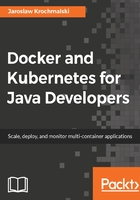
When to use the microservice architecture
The microservice architecture is a new way to think about structuring applications At the beginning, when you begin creating a system and it's relatively small, there will probably be no need to use the microservices approach. Of course, it's nothing wrong with the basic web application. When doing basic web applications for the people in your office, going with the microservice architecture may be overkill. On the other hand, if you plan to develop a new, super internet service that will be used by millions of mobile clients, I would consider going with microservices from the start. Joking aside, you get the picture, always try to pick the best tool for the job. In the end, the goal is to provide business value.
However, you should keep in mind the whole picture of your system after some time. If your application is growing larger in features and functionality than you expected, or you know that from the beginning, you may want to start breaking features off into microservices. You should try to do the functional decomposition and point out the fragments of your systems that have clear boundaries and which would need scaling, and separate deployments in the future. If there's a lot of people working on a project, having them developing the separate, independent pieces of an application will give the development process a huge boost. There can be a mix of technology stacks used each service can be implemented in a different programming language or framework and store its own data in the most suitable data storage. It's all about API and the way services communicate with each other. Having this architecture will result in a faster time to market the build, test, and deployment time is highly reduced in comparison to a monolith architecture. If you need to scale only the service that needs to handle higher workload. Having Docker and Kubernetes available, there is no reason not to go into the microservice architecture; it will pay off in the future, for sure.
The microservice architecture is not just a new trendy buzzword, it's generally accepted as a better way to build applications today. The birth of the microservice idea has been driven by the need to make better use of compute resources and the need to maintain more and more complex web-based applications.
Java is an excellent choice when building microservices. You can create a microservice as a single executable JAR, self-contained Spring Boot application, or fully featured web application deployed on an application server such as Wildfly or Tomcat. Depending on your use case and the responsibilities and features of your microservices, any of the previous will do. Docker Repository contains a lot of useful images you can use freely as a base for your microservice. Many images present in The Docker Hub are created by private individuals, some extending official images and customizing them to their needs, but others are entire platform configurations customized from base images. The base image can be as simple as pure JDK or it can be a fully configured Wildfly ready to run. This gives a serious development performance boost.